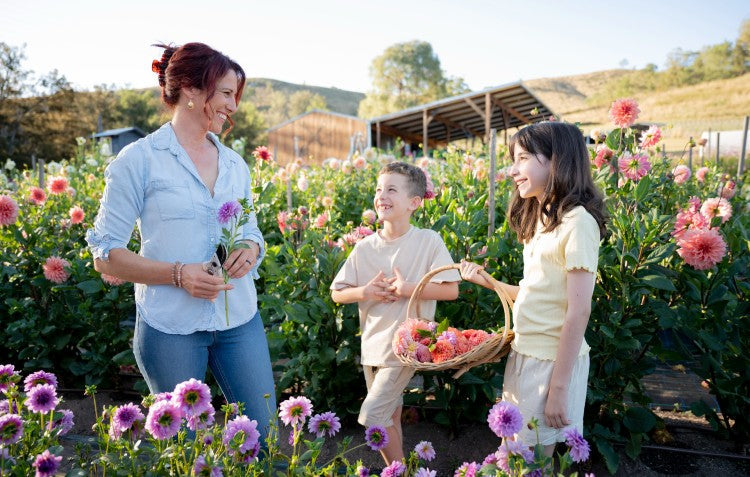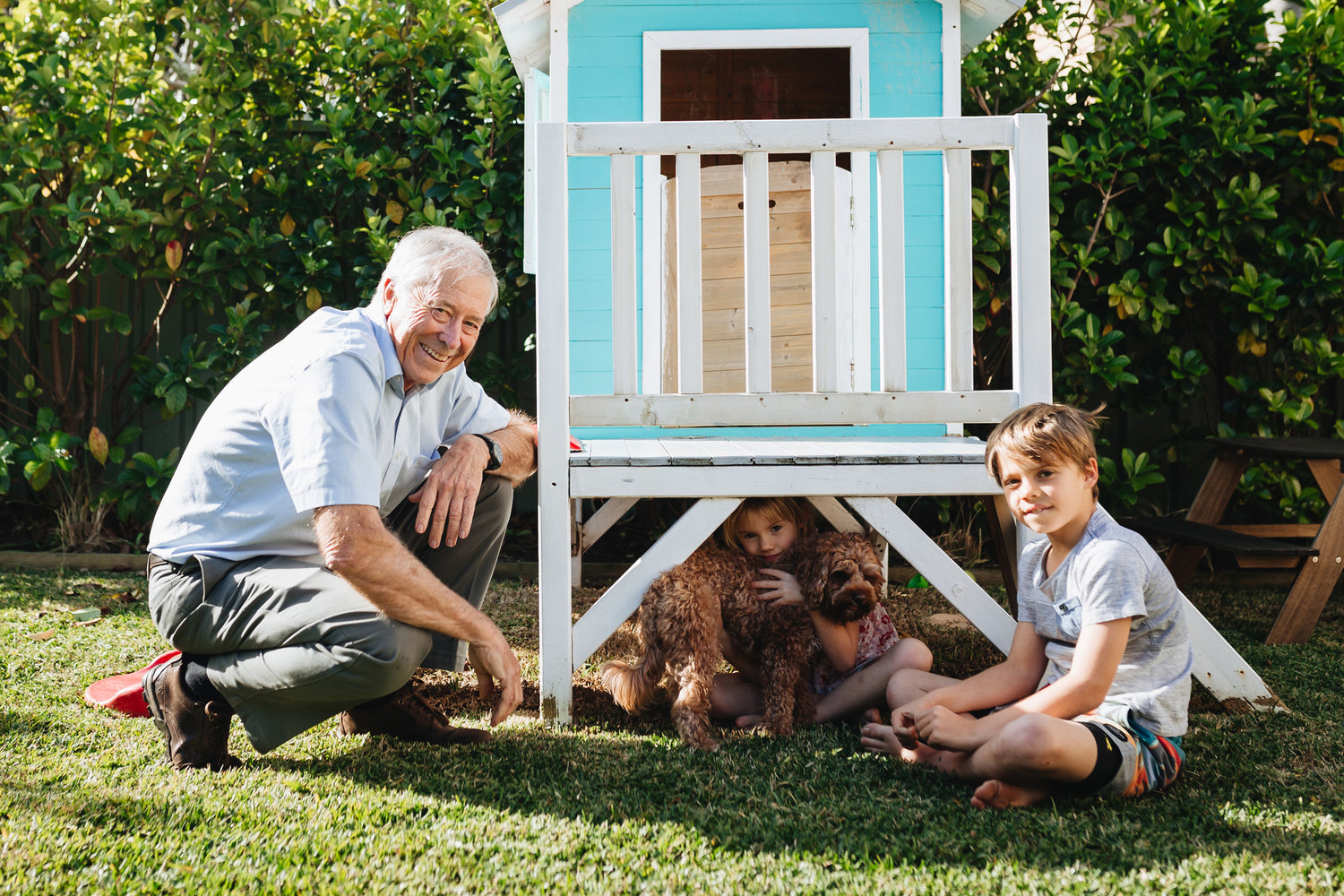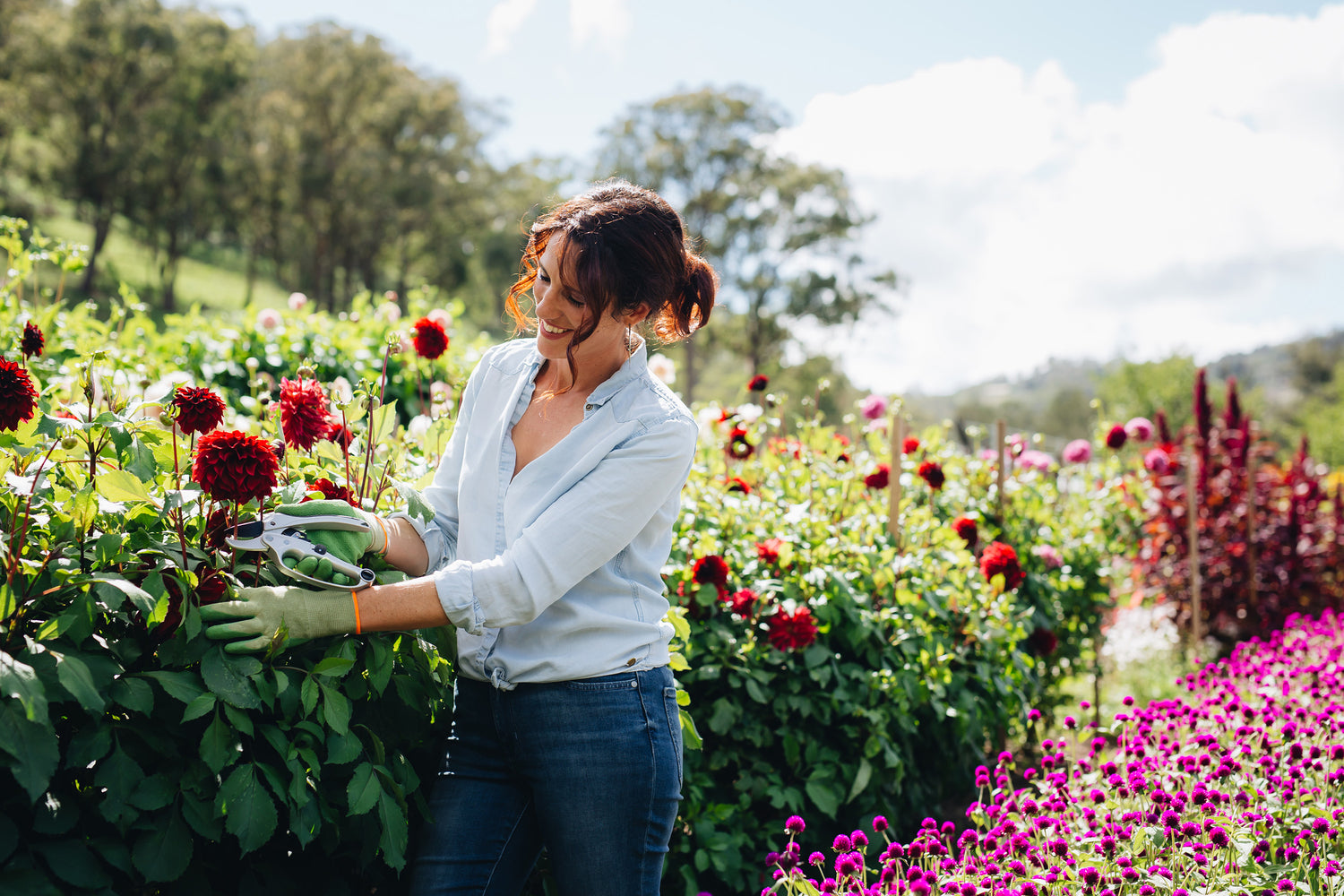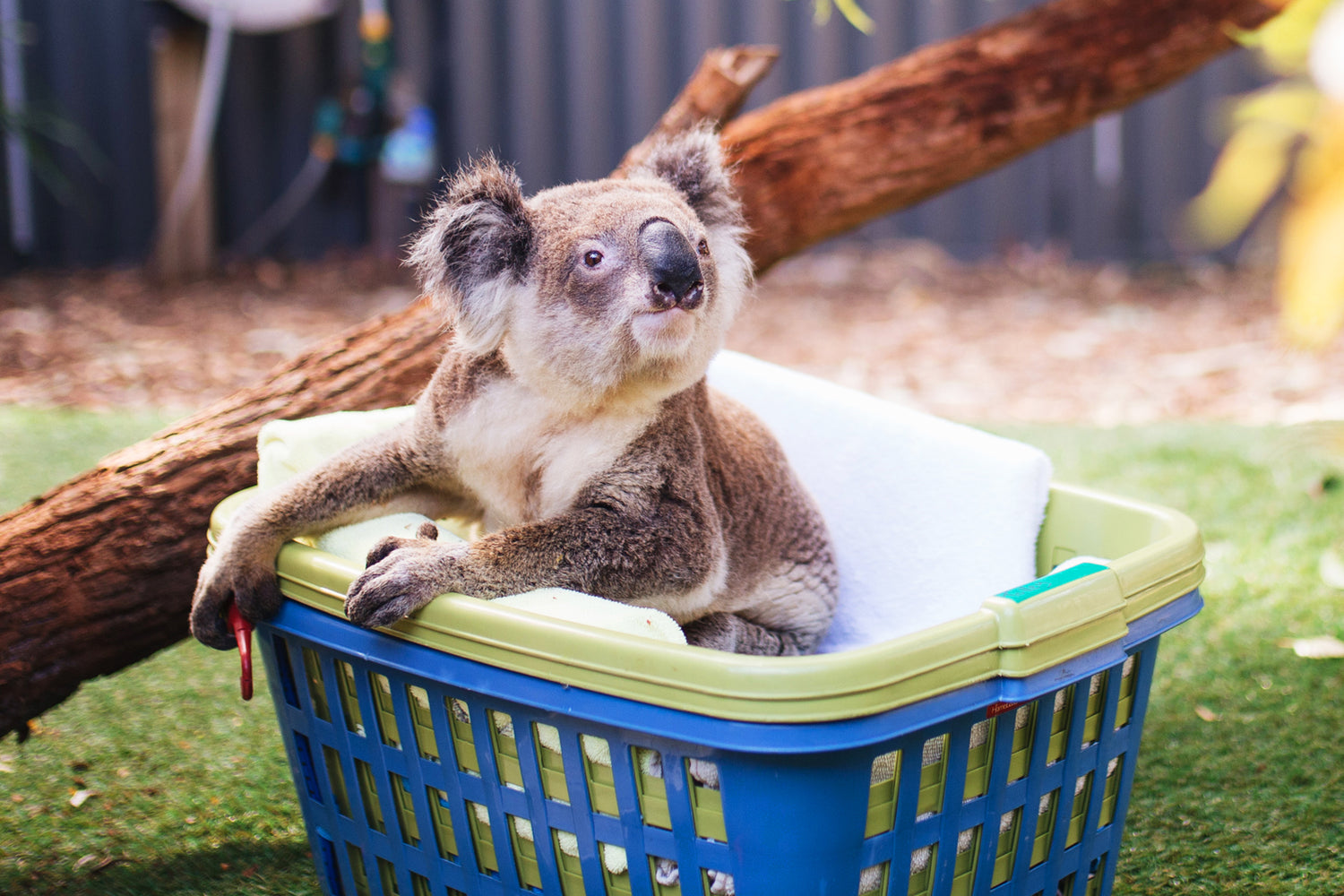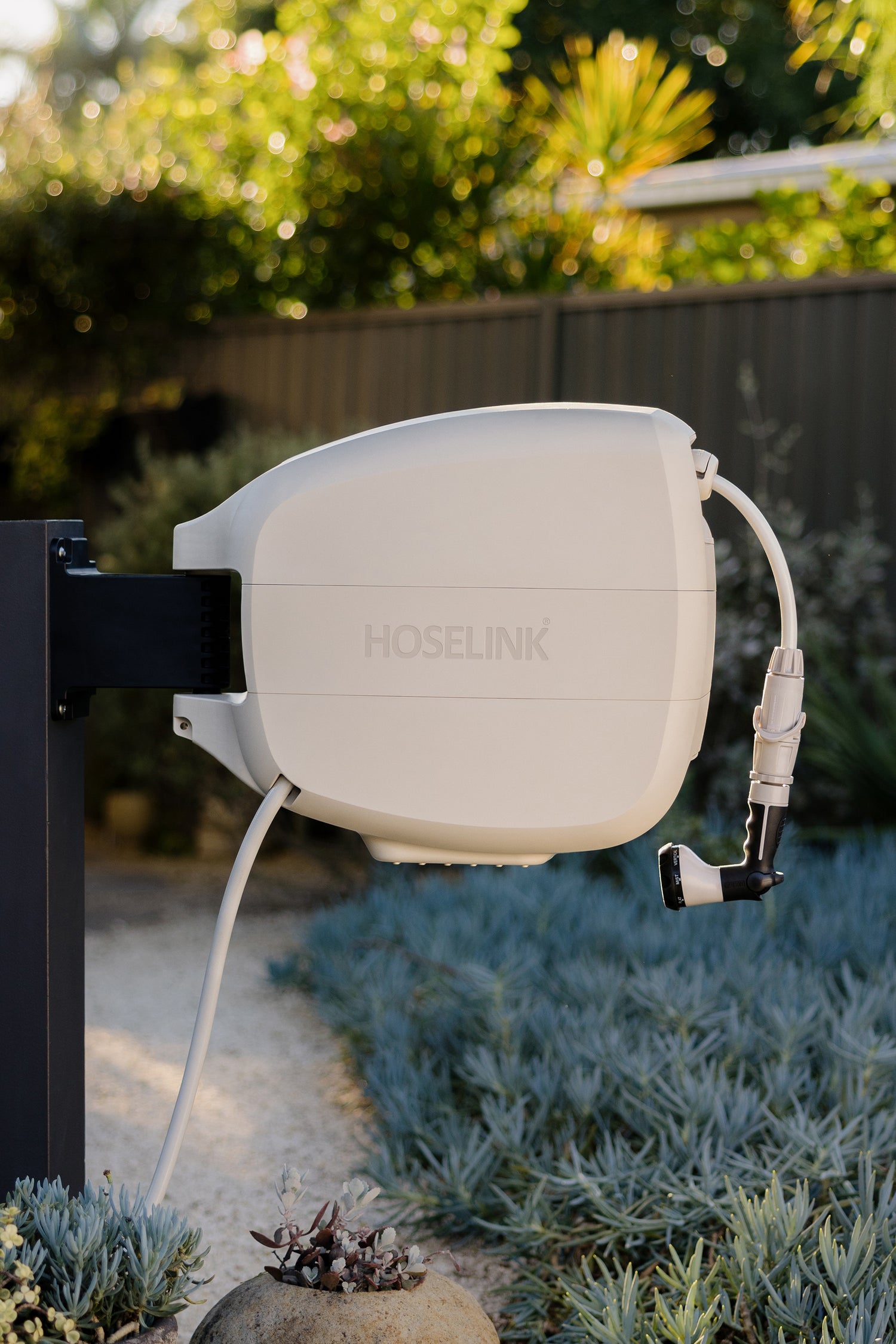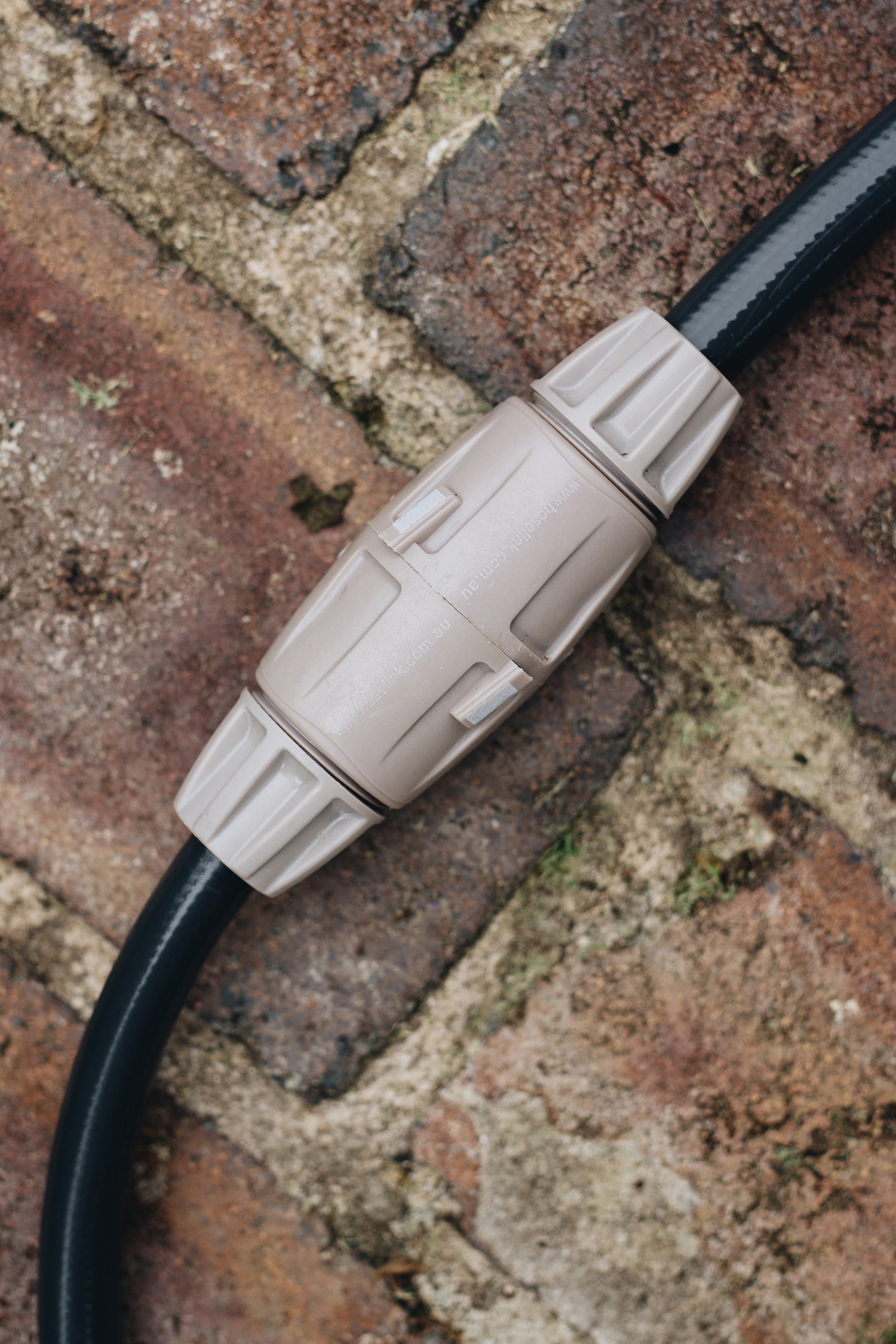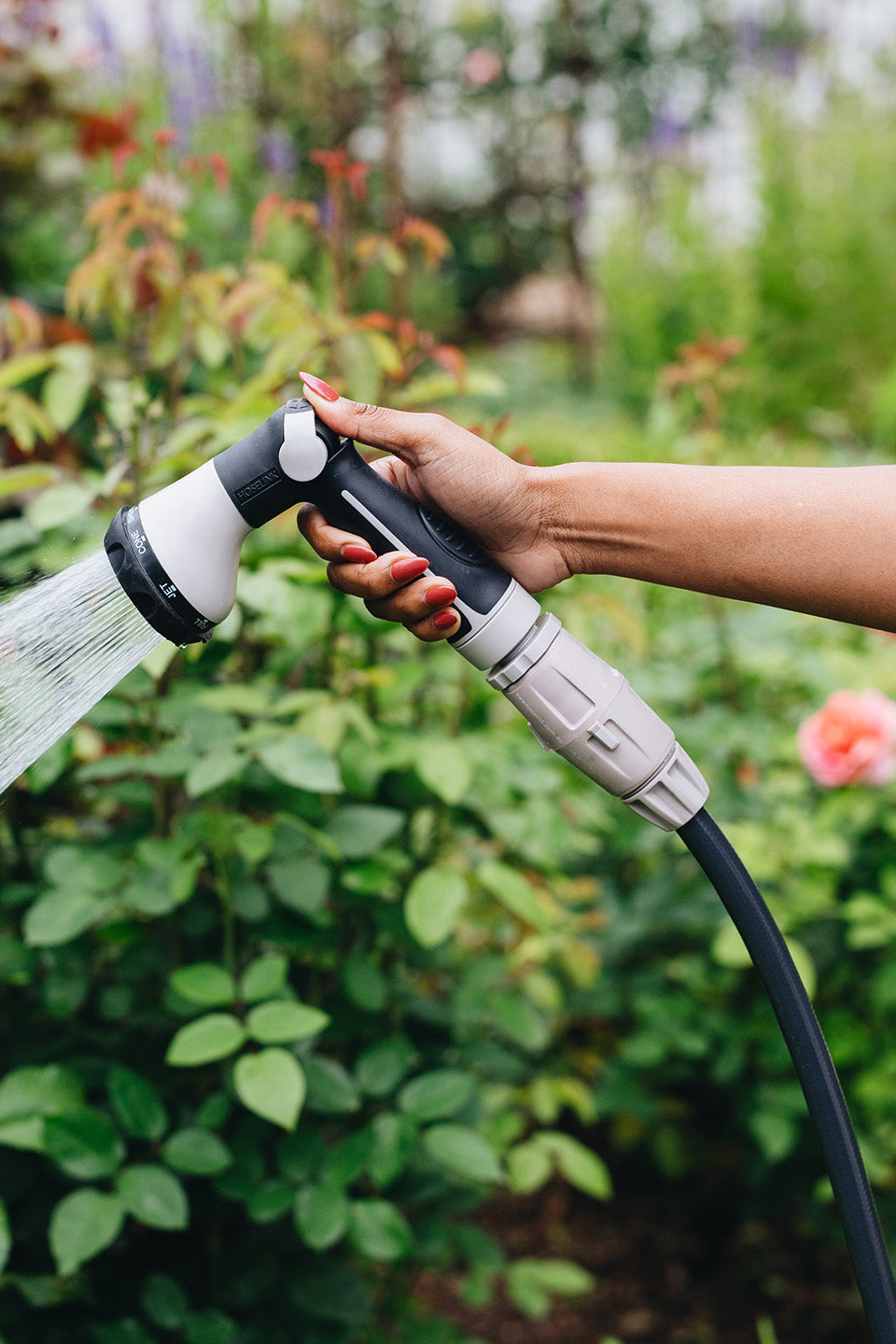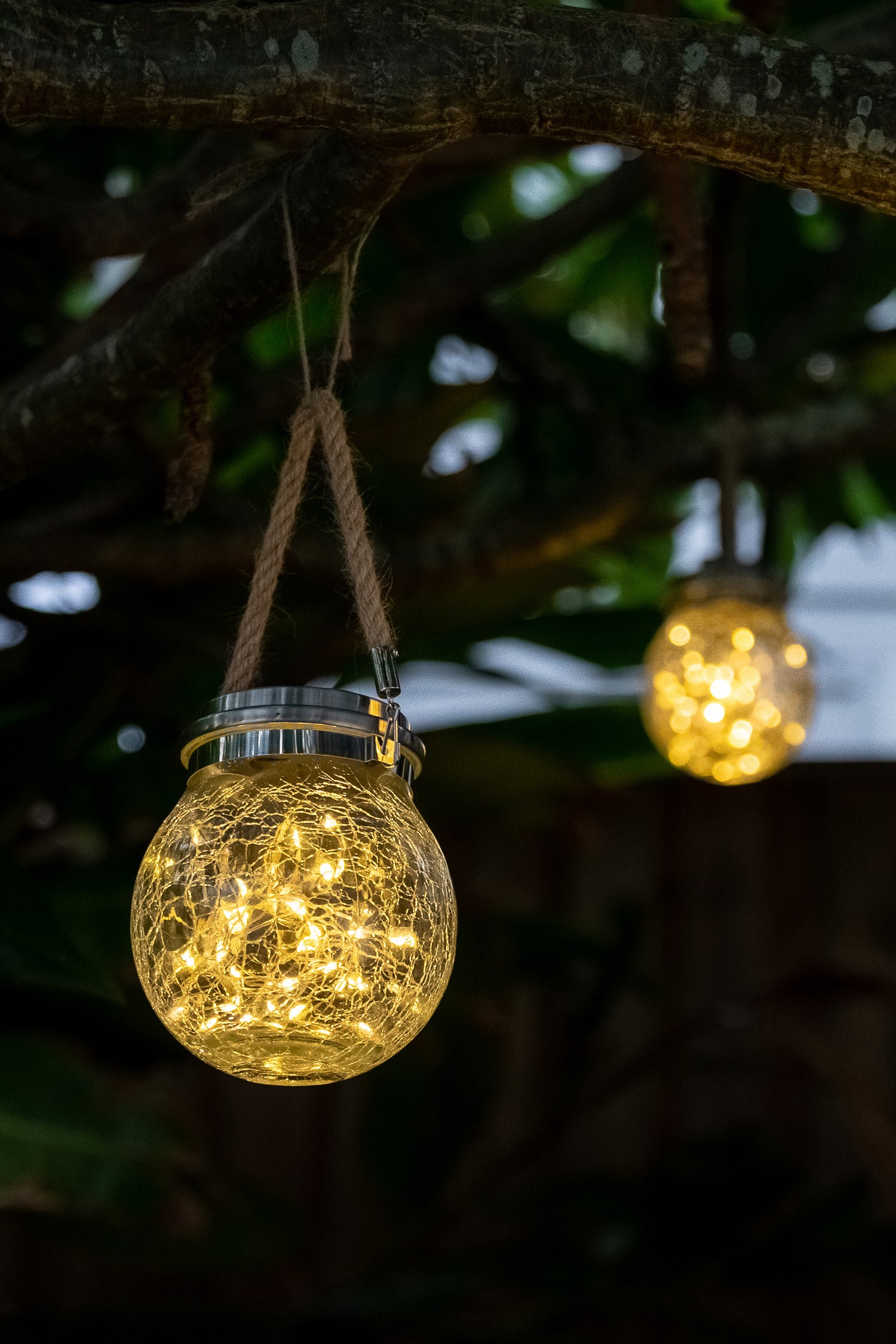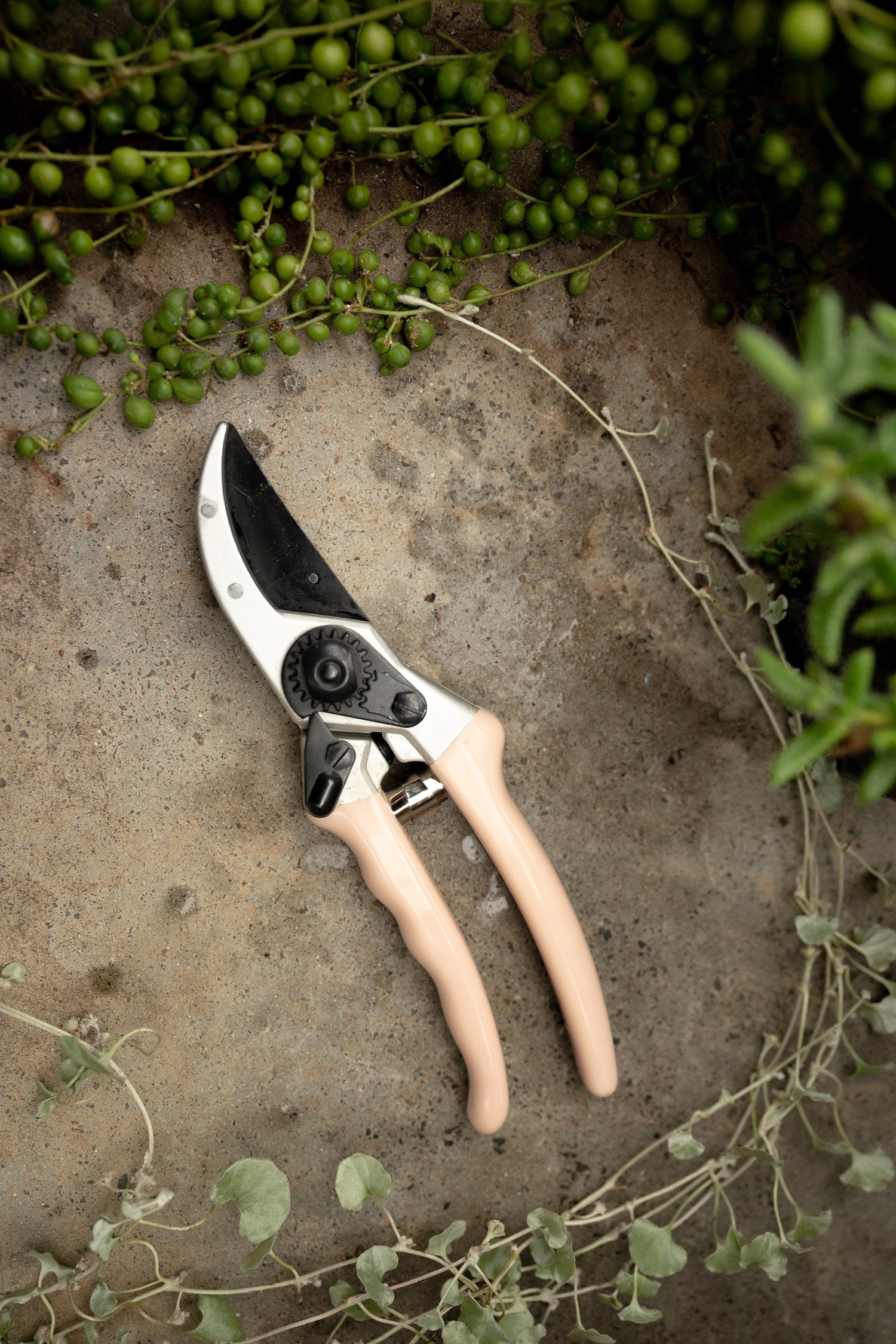If you’re facing water restrictions, trying to cut down on water usage, or live in a region where rainfall is scarce, maintaining a lush and vibrant garden can often feel like an impossible task. But it doesn’t have to be! Choosing hardy shrubs and drought-tolerant plants is a smart and sustainable way to create a beautiful, resilient garden that thrives with minimal watering.
To help your outdoor space flourish, we’ve selected 10 of the best low-maintenance plants to sow in Autumn, that could be your one-stop solution to a happier garden – and gardener! But first, a few things you should know before getting started.
Setting a solid foundation
To get the most out of your new plants, it’s important to lay a good foundation. That means preparing the soil, choosing the best plants for the climate you live in and remembering that, whilst these plants might need little water, they’ll still need nurturing in the early stages of their lives…
The good news is that planting at the very start of autumn gives your new additions the best chance of establishing before summer rolls around again. The soil is still warm from last season, but the cooler air temperatures and occasional rainfall reduce stress on young plants, making it easier for root development. Watering the plants semi-regularly in the first three months will help to establish a deep root system in time for the next heatwave.
With that in mind, let’s take a look at the best plants to grow to keep your garden looking healthy, without you having to constantly reach for the hose.
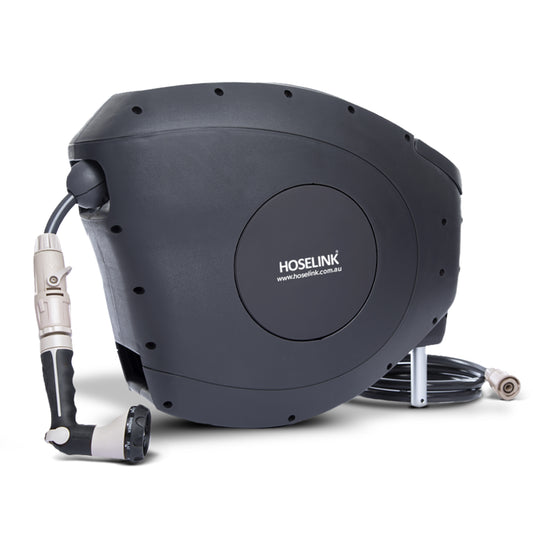
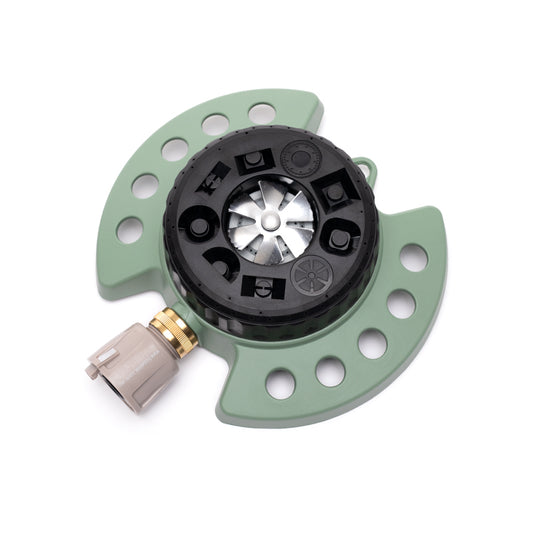
Agapanthus
This striking species, also known as the African lily, originates from Southern Africa and is easy to grow even in poor soil conditions thanks to its large water-storing roots. Though Agapanthus need watering, feeding and tending to when first planted, once established these tough plants can withstand long dry spells with ease if positioned in a warm, sunny spot with well-drained soil.
Perfect for creating stunning borders with their statuesque stems and upright shape, agapanthus sprout beautiful clusters of tubular flowers in pastel shades of blue, cream and lilac – a far cry from the sandy yellows and greens usually associated with drought-hardy plants.

Top tip: Widely misunderstood, agapanthus is considered to be an invasive weed in some pockets of Australia, where it can spread aggressively if left unchecked. However in other regions it’s a much-loved garden favourite, prized for its vibrant blooms, toughness, and excellent drought tolerance. Still, it’s always a good idea to check with your local council or environmental authority to make sure agapanthus is welcome in your area.
Thyme
Did you know this fragrant Mediterranean herb is also a showstopper in dry gardens? Far from just a handy kitchen staple, thyme also produces masses of tiny, edible purple flowers that add charm to any garden and, even better, are a magnet for pollinators. Grow swathes of thyme across garden beds or tuck between pavers for a lush look throughout the year.
Thyme thrives in well-drained soil and loves a sunny spot, though it will happily tolerate partial shade. It’s also perfect for pots, making it an excellent choice for balcony or small-space gardens.

Top tip: Lightly prune thyme after flowering to keep it compact and encourage fresh growth (avoid cutting into old, woody stems as they don't regrow well). Thyme dries easily and retains its aroma well, making it easy to preserve, so instead of letting cuttings go to waste, use sprigs to add flavour to roasts, stews, and marinades. You can tie a few sprigs together with string or a rubber band and hang the bunches upside down for 1–2 weeks in a warm, dry, well-ventilated spot (like a pantry or laundry room) until the leaves are crisp and crumble easily. Alternatively, spread thyme sprigs in a single layer on a parchment-lined baking tray, set your oven to the lowest temperature and bake for 1–2 hours with the door slightly ajar, checking regularly until the leaves crumble easily.
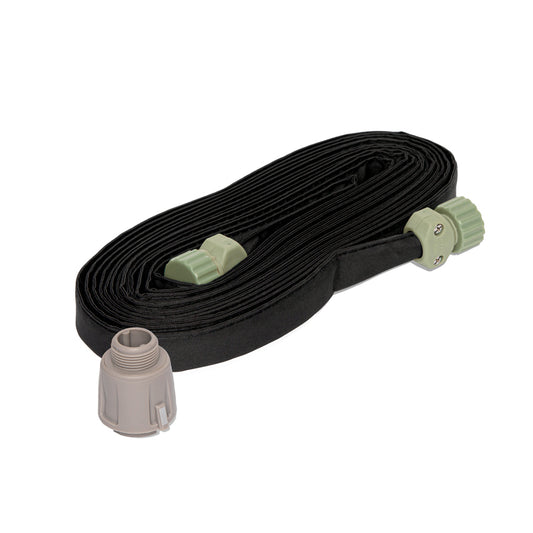

Acacia
Australia’s national floral emblem, Acacia (also known as the golden wattle), is not only iconic but also one of the most drought-tolerant plants you can grow. Its hardy structure makes it highly resistant to moisture loss, making it ideal for dry and challenging climates.
Usually found growing in the Australian bush, Acacia thrives in full sun and harsh climates. It produces dense clusters of sweetly scented, yellow puffball flowers from spring, though it’s notorious for having a relatively short lifespan. On average, it lasts 7 to 15 years, though some smaller species may live only 5 to 10 years. That said, a few hardier or slower-growing species can reach 20 years in the right conditions. Their quick growth and early flowering make them great for adding instant impact to new gardens – even if they’re not around forever.
There are many species of wattle, so you can choose your own adventure – just be sure to plant in well-drained soil with plenty of sunlight and room to grow.

Fun fact: True to its hardy nature, the wattle has become a national symbol of strength, resilience, and renewal. Often used in times of remembrance, it represents unity and the enduring spirit of the Australian people. It’s so deeply connected to the nation that it even has its own day – Wattle Day, held on September 1st – which marks the beginning of spring and honours the wattle’s special place in Australia’s identity and heritage.
Gazania
This perennial South African daisy is not only striking to look at but also exceptionally well-suited to Australian gardens. In fact, Gazanias thrive in drought-prone and coastal conditions, making them a tough and reliable all-rounder wherever you live. They perform best in full sun and sandy, well-drained soil – though they’re surprisingly tolerant of poor soil too. And with large, showy flowers in cheerful shades of yellow, orange, red, pink, and white, they’re an obvious choice for brightening up rockeries, borders, or tough spots in the garden, despite being ultra low-maintenance and easy to grow.
Top tip: While gazanias are popular for their vibrant blooms, much like Agapanthus they’re considered a weed in some parts of Australia – particularly in coastal environments in Victoria, Tasmania, and South Australia, where they’ve previously become invasive. However, many modern hybrids are more garden-friendly and safe to grow in most areas. Before planting, it's best to check which varieties are suitable for your region and avoid those known to spread aggressively to keep your neighbours happy.

Correa
A tough native shrub found mainly in Eastern Australia, the Correa is a valuable plant to have in the garden – especially when in bloom. Its delicate bell-like flowers, which range from soft pinks and reds to pale greens and creams, are rich in nectar, attracting beautiful honey-eating birds like spinebills and honeyeaters.
Remarkably adaptable, Correas thrive in a range of conditions – from full sun to light shade – and are especially useful in those tricky spots where other plants struggle. They grow well beneath large trees, in shrub gardens, rockeries, and even on slopes or embankments, often helping to stabilise soil. Once established, they’re drought-tolerant and require little ongoing care, making them an excellent choice for wildlife-friendly and water-wise gardens.
Fun fact: Although high in nectar, Correas have low pollen levels, so they’re a good option for gardeners with allergies or hay fever concerns.

Lavender
Lavender is probably one of the most popular drought-tolerant flowers there is, thanks to its dazzling purple colour and soothing fragrance. There are three main types to choose from:
-
English Lavender: A classic lavender with a sweet, strong fragrance that thrives in cooler climates and can be used in cooking, oils, and gardens.
-
French Lavender: A larger shrub with serrated leaves and a herbal scent that prefers warmer, coastal climates and is mainly ornamental.
-
Italian Lavender: Featuring distinctive “butterfly” flowers with a sharp, medicinal scent, French Lavender is best suited to warm, dry areas and is mostly grown for decorative purposes.
All three types are drought-tolerant once established. Position in a sheltered spot with full sunlight (the more the better, as lavender thrives on at least 6 hours of direct sunlight a day) and well-drained soil or raised pots for best results. A word of warning: this perfumed shrub does not tolerate frost, so ensure it suits your region’s climate before planting.
Fun fact: Lavender is well-known for its soothing properties and aromatherapeutic benefits, but not many people know it’s a natural pest repellent too. While insects love the flowers, many pests like mosquitoes and moths dislike the scent, making it a great companion plant to deter aphids from roses, or to plant in pots around outdoor dining areas and terraces to keep unwanted bugs at bay.

Echium
With tall, dramatic spires covered in vibrant purple or blue flowers, echium adds height, movement and impact to garden beds while drawing in a flurry of bees, butterflies and birds.
Echiums are happiest in full sun with well-drained soil, and once established, they require very little water or fuss. They grow well in hot, dry, and coastal conditions, making them an excellent choice for low-maintenance or drought-tolerant gardens. Because of their size (they often grow over two metres tall and wide) they’re best suited to larger gardens or open landscapes where they have space to spread out.
Fun fact: The name “echium” comes from the Greek word "ekhis", meaning viper, because the seeds of some species resemble a viper’s head.

Agave
If you’re looking to create more of an architectural display in your garden beds, then look no further than this eye-catching perennial succulent. With dramatic fleshy leaves, serrated edges and spiny pointed tips, agaves make a stunning focal point when used in borders, rockeries, or gravel gardens.
They're incredibly easy to grow and thrive in sunny spots with well-drained, sandy soil. While hardiness varies by species, most agaves can survive without water for long periods of time. In fact, once established these plants can pretty much be forgotten about, as they store water in their thick foliage, using their long roots to absorb more when necessary.
Top tip: Agaves are monocarpic, meaning they flower once after many years and then die. So if you see a towering stalk of greenish-yellow blooms, know you’re witnessing the plant’s grand finale. But don’t worry – agaves often leave behind "pups" (baby plants) at their base before they go. These can be left to grow in place and form a dramatic cluster, or dug up and replanted elsewhere to continue the legacy.

Cordyline
Cordylines are easy to care for in both sunny and temperate climates, and bring a tropical ambiance to boring garden beds and borders with their palm-like fronds and tufts of spiky red, bronze, pink, or green leaves. Once established, they require very little watering; however their vibrant evergreen foliage provides year-round colour and structure and ensures your garden stays lush and vibrant through every season. The perfect choice for gardeners looking to add maximum drama with minimal effort.
Fun fact: Cordylines are often mistaken for palms because of their spiky, upright foliage. But they’re actually woody perennials from the asparagus family!
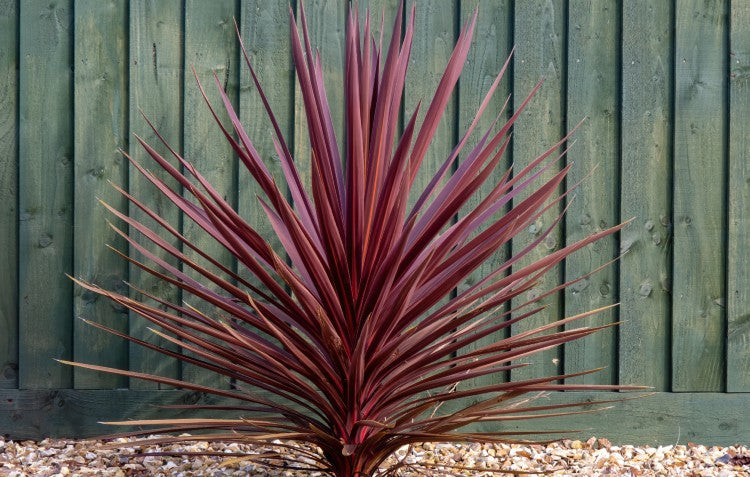


Grevillea
This striking native species is easily identifiable by its distinctive, spider-like blooms. It can range from compact shrubs to towering trees, and has nectar-rich flowers that are a magnet for bees, birds, and other pollinators and provide a vibrant burst of colour throughout the year. But don’t be fooled by their showy flowers – grevilleas are totally fuss-free once established.
Grevilleas are happiest when planted in a sunny spot in the garden and in gritty, free-draining soil. While they're drought-tolerant, they’ll appreciate the occasional deep soak during extended dry spells – Hoselink’s Root Waterer & Soil Breaker is great for delivering moisture directly to the roots without overwatering.
Top tip: Grevilleas pair beautifully with other colourful Australian natives like kangaroo paw, callistemon (bottlebrush), or correas, and thrive in similar low-maintenance, low-water conditions.

More to Explore
Remember, while these ten are among our top picks, there’s a whole host of drought-tolerant plants out there, from hardy Australian natives to Mediterranean herbs, sculptural succulents, and flowering perennials. All perfectly suited to low-maintenance gardening endeavours such as building a striking rockery, brightening up flagstone patios or simply reducing your water usage.
Whatever your goal, choosing the right plants makes all the difference. Keep an eye out for more drought-tolerant varieties to keep your garden full of life, colour, and texture, even through Australia’s hottest, driest seasons.

